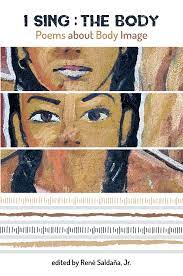René Saldaña, Jr.
On Writing, On Reading
12.13.2023
On Glossaries and Italicizing
12.10.2023
So, two years have passed since my last post, but what wonderful two years they've been! For one, I've been promoted to Professor, the pinnacle for an academic. I've documented this experience, which has not been a clean one, in a book chapter I co-authored with former student, now-colleague Dr. Elizabeth Stewart. The title of our chapter is titled "When a Single Song Just Won't Do: The Mixtape as Research Methodology" found in DeHart & Hash's Arts-Based Research Across Visual Methodology: Expanding Visual Epistemology (Routledge, 2023). But I've made it to this level and trying to make the best of it. If folks on the path think it's about publishing or perishing on the way up, it doesn't end with promotion and tenure or promotion to full. The expectation to keep publishing only increases. We become, in a sense, show windows: national visibility and recognition become paramount. So we keep writing and publishing. What changes is that I finally get the opportunity to write what makes me happy. Sure, in a college of education, I'm still a social scientist, or what passes, very loosely for one, so I write up my research.
But now, I'm experimenting with arts-based research and writing. Two titles forthcoming in this vein, both poetry collections. The first is called Eventually, Inevitably: My Writing Life in Verse (Arte Público Press/Piñata Books, 2023), pictured here:
1.04.2022
All This While
In all this while I've not posted (2019), I've gotten a lot done: for one, I've published a bit: some fiction, some academic material, a few blogs. I've continued to teach at Texas Tech University in the College of Education (I've put in my dossier for promotion to professor; will hear news at the end of February/beginning of March); I've co-edited an academic book that should be out this coming year (working with my colleagues at TTU); I've edited a YA anthology of poetry on body image called I SING : THE BODY (FlowerSong Press); and I've completed and submitted the sixth installment of the bilingual Mickey Rangel, Boy Detective series, tentatively titled A CASE IS JUST A CASE. I've also completed a manuscript called EVENTUALLY, INEVITABLY: MY WRITING LIFE IN VERSE, A MEMOIR that is out for consideration. I also laid some flooring throughout the house. Ain't that something! I'm sure I've left out a few items.
I've also gotten sick with COVID-19. It was a bad 10 days, and months later I still get winded, though that might be because I'm old and out of shape. It was the strangest time. I was good for the first part of the quarantine, up and about, though I knew not to do too much because a man I knew who'd been sick felt a bit better and decided to go out to work in his garden; he wasn't better, really. The stress took a toll and unfortunately, he ended up in the hospital, where he died. So I took it easy, even when I felt okay. Once it hit, though: boy oh boy! It was bad with my sense of smell gone, though I could still taste. Body aches like nobody's business. But staying in bed hurt, too, so I'd sit up some during the day, and I drank a lot of cranberry juice mixed with water. In that time, a friend from church died from it. So you can imagine the panic in the middle of the night, praying hard to just take my next breath, and my next, and my next.
Anyhow, I'm back. and I'll keep posting some. About reading, writing, poetry, images and the like. I remember enjoying this blogging when I first started, and I did a lot of it.
5.24.2019
1.05.2017
On Cultural Appropriation
Recently on Facebook, I was criticized for not knowing what cultural appropriation is. A friend had posted a side-by-side shot of Princess Leia and a Mexican soldadera, showing how Leia's two side buns had been inspired by the woman revolutionary, confirmed by Lucas years prior. A fellow commenter called it cultural appropriation, and I disagreed. Her response: you clearly don't know what cultural appropriation is. But I do. And Leia wearing the side buns which were inspired by the soldadera is not an example of it. One honors, the other exploits. It's that clear. And for this person to call it appropriation means that she would claim to know Lucas' intent, which is ludicrous because she can't know the heart of a person.
Michael READS!
Read Michael's reviews at http://margiesmustreads.com/2017/01/michaels-top-5-books-2016/#comment-11074.
On Glossaries and Italicizing
Author and creative writing teacher John Gardner contends that "the most important single notion in the theory of fiction" is that...
-
More Pics räkmacka (shrimp sandwich): one of many open-faced sandwiches here (amongst my favorites); but I have to wonder why a 'sandwic...
-
In all this while I've not posted (2019), I've gotten a lot done: for one, I've published a bit: some fiction, some academic ma...
-
So, I've checked in now and again, but have failed miserably to update my blog. I feel badly because I do feel the blog as a forum is a ...




